Table of Contents
First guitar… there are a lot of memories going to be attached to this word. Because whether you pick it for a pastime or a profession—your first guitar will be the first milestone. It will help you learn and grow and determine the course of your musical career. So, selecting the right type, size, style, sound, and quality is imperative.
However, the guitar features technical jargon that a beginner is unlikely to understand, so buying the first guitar can be daunting. Often beginners who don’t know much about guitars jump right into buying something they don’t really need or that is hard to play—and end up regretting it!
Therefore, to ensure you don’t make any mistakes when purchasing your first guitar, we have put together these tips that will help you find the best guitar you can keep for years to come. Let’s get to it!
1. Get the guitar that suits your musical taste
The first thing you should consider when buying a guitar is your preferred genre. Is there a particular style of music you enjoy most? If so, get the kind of guitar that suits your musical taste! Because eventually, you will want to play and perform that style of music you like on your guitar.
Nylon-string classical guitars are a great choice for those who enjoy classical, flamenco, or musica española. An acoustic guitar is the right choice if you are into pop, folk, slow beats, or country music. And electric guitars are a good place to start if you want to try anything from blues to rock to jazz and heavy metal.
2. Pick the right size
There are different sizes of guitars available in the market, and you should pick one that is right for you. Depending on your age and height, you may need a bigger or smaller size. There are three main sizes of guitars: full-sized guitars, 3/4-sized guitars, and mini-guitars.
For kids or teens, smaller guitars provide the necessary balance and playability. If you have moderate size, 3/4-sized guitars are optimal. And naturally, for those who are taller, full-sized guitars are best.
3. Decide on the look and design
A guitar’s design and appearance matter more than most guitarists realize. Because in the end, if you do not like the style and look of the guitar, no matter how good it sounds, you will avoid playing it. Therefore, prior to investing in a guitar, try it first—play it, and think about whether it matches your personality and whether you will enjoy performing with it.
Some guitars are perfect for some people. At the same time, others find those same guitars repulsive. So, before buying a guitar, make sure you like its style and appearance.
4. Prioritize your comfort
If you can’t play the guitar comfortably, you won’t want to play it often. It is necessary to take into account the look and style of a guitar, but comfort is even more crucial since it directly impacts how much you enjoy playing it. When you sit down to play, some guitars give you a snug fit as they contour around your body. Other guitars feel terrible to play sitting down but are fine to play standing up.
If you try out a guitar and it digs into your ribs, feels excessively heavy when playing standing up, or causes you any other discomfort—even if you like its style and design—don’t opt for it. Because if something bothers you during a short test, it will become very irritating during longer sessions. Thus, don’t forget to take comfort issues seriously.
5. Check out the sound quality
When buying a guitar, the quality of sound matters highly. Yet, quality is subjective; sound you may like while another may not. So, check the quality of the guitar for yourself—don’t believe other people who say it’s the best. Take note of the quality of sound the guitar makes as you play. Then make comparisons of it with other guitars you like. It is worthwhile to compare it with a few different guitars of your choice; that way, you will be able to pick a fine piece.
6. Buy in-store
The lower prices of online guitars might tempt you to purchase one. However, when buying a guitar online, you can’t test it. So, when buying your first guitar—you should go to a local dealer, preferably one with a good reputation. Also, when you purchase the guitar from the store, you can ask them to set it up for you. Most guitar stores have luthiers who do guitar setups, which usually cost between $25 and $50.
What is the reason for setting up a new guitar? Well, generally, guitars come with unoptimized setups from the factory. They might have sharp fret edges, high action, or off-tune intonation. All of these things are checked and fixed when you get your guitar set up, making it easier for you to play.
7. Look out for your budget
It is a good idea to set a budget; otherwise, you may be tempted to pay that little bit extra for a particular color or shape that really appeals to you. You can find a wide selection of excellent beginner guitars that are built with superb quality and provide superior comfort for under $250. A budget like this is perfect for a first guitar since it allows you to avoid overspending. Initially, start with a low budget, then as you progress and dedication allows, you can go for expensive pieces.
8. Keep an eye out for used guitars
It’s possible you are interested in a guitar, but it’s a little out of your price range, and lower-priced guitars of the same quality aren’t good enough. What to do now? Don’t fret! Used guitars exist for a reason. From your local store to eBay, you can get great deals on used guitars. And worry not about their quality; most guitars are well cared for and won’t be too cracked or damaged. If you take the time to look, you’ll find something in great shape.
9. If in doubt, ask an expert
Ultimately, if you are still undecided about what guitar to buy even after following all of the above tips, simply talk to the staff at your local music store to help you pick one. Otherwise, ask a friend with musical experience to help you select a guitar.
10. Don’t be fixated on features
Lastly, when buying a guitar for the first time, don’t spend too much on features you won’t use. Guitars can have many features, such as bridges and pickups, that are unnecessary for beginners. Don’t get too hung up on them yet. For example, it’s cool to have a Floyd Rose-style bridge, but it’s not a good pick for a beginner. In fact, such a style even causes frustration. It’s not easy to string them up. That’s why, starting out, stick to a hard-tail bridge. Keeping things simple is the key.
It’s fun and memorable to choose your first electric guitar; everyone remembers their first electric guitar, so don’t rush! Take your time and enjoy the experience! These tips will help you pick a guitar you’ll enjoy playing for a long time.
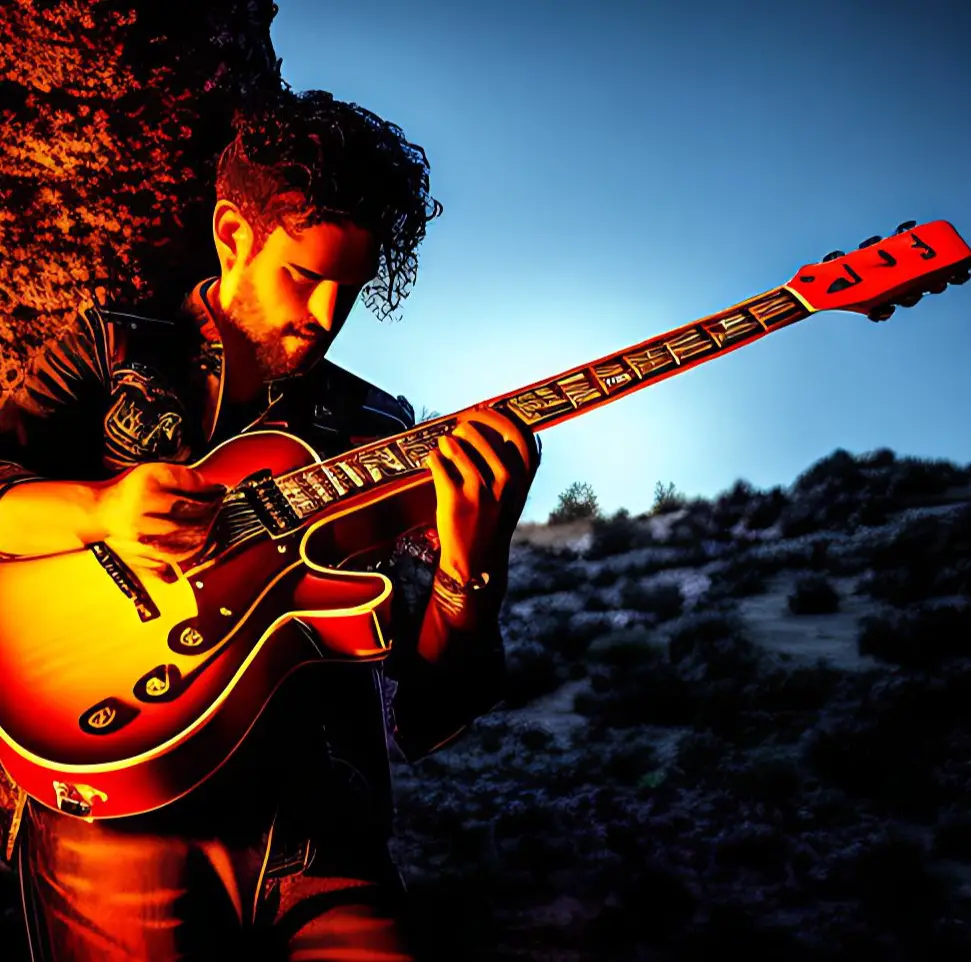
I have been playing guitar for the past 15 years, and my knowledge and passion for guitars prompted me to start Guitaresque to share my knowledge, tips, and tricks with other guitar players. The sole purpose of this website is to help and inspire guitar players worldwide, to improve their playing and their love for guitars.



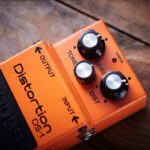


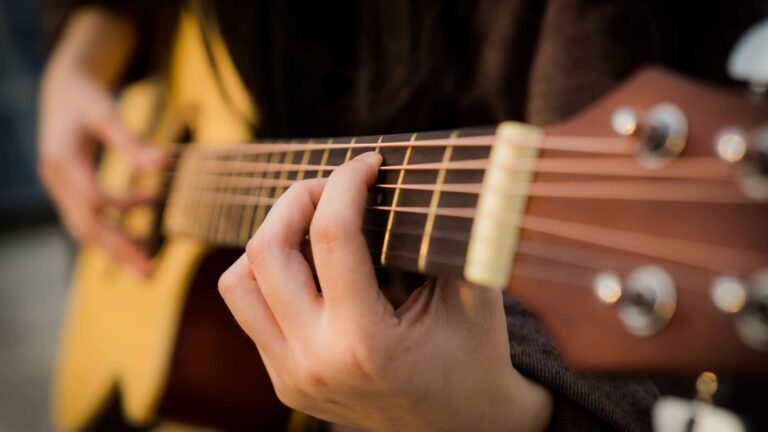
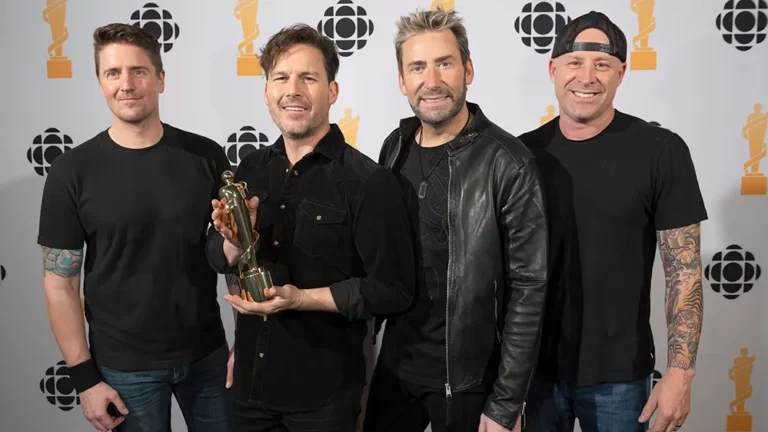



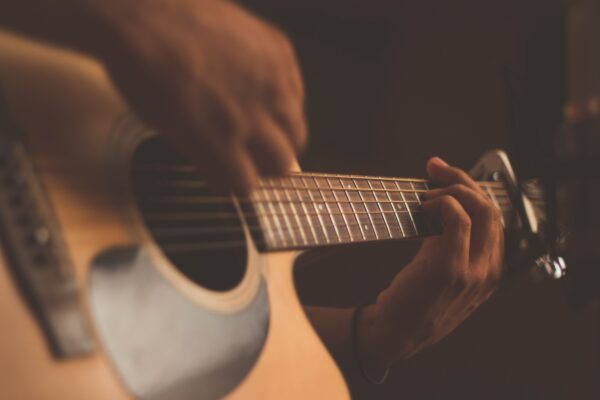
![How To Take Care of Your Hands To Play Guitar [9 Tips]](https://guitaresque.com/wp-content/uploads/2023/01/Depositphotos_72821727_S-600x400.jpg)
